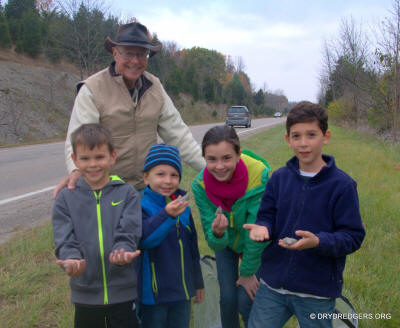
As you can see from the above picture, everyone enjoyed finding loads and loads of horn coral at our October 2014 field trip to the site in Ohio code-named "Horn Coral Heaven."
Photos and words by Bill Heimbrock

As you can see from the above picture, everyone enjoyed finding loads and loads
of horn coral at our October 2014 field trip to the site in Ohio code-named
"Horn Coral Heaven."
For the 4th Saturday in October, the weather we excellent. We had 60s temperatures (yep, if you are reading this outside the USA, that's in Fahrenheit degrees). The sun came out in the afternoon, but even the morning was warmer than our last trip here in 2011.
The site was a two-lane highway in rural southern Ohio that had multiple road cuts exposing the Whitewater Formation of the Cincinnatian Series. The rocks and fossils were late Ordovician Period age, about 437 million years old.
The site is an older one where there were a couple of feet of loose rocks
fallen from above. You could literally load a bucket with horn coral from the
fallen material.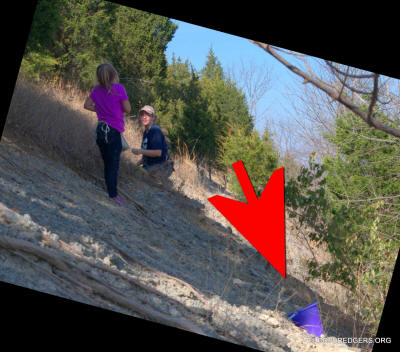
Where is "UP" in this picture? In order to keep your bucket of horn coral from
spilling down the hill, you needed to lodge it in the loose rocks while you
collect fossils nearby. Nor was it easy to stay up on the hill cut when
every step caused you to slide.
Fossils Found That Day
Horn Coral
The upper layers of this road cut were eroding out hundreds of the large horn coral, Grewingkia sp.. Some of these where absolutely huge. Everyone found as many of these as they care to take home.
If you look at the wide end of the horn coral, Grewingkia sp., you can see the
septa.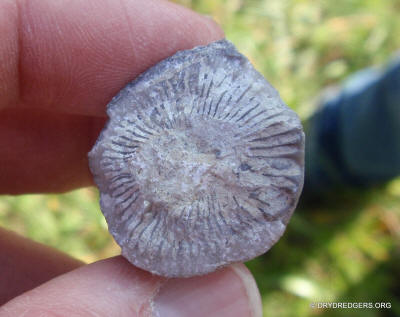
Another type of horn coral we found was Streptelasma sp.. Shown below, these are
smaller rugose corals that attached to objects and clustered together.
(Next 4 pics.)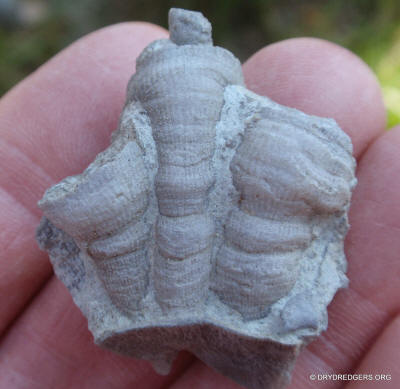

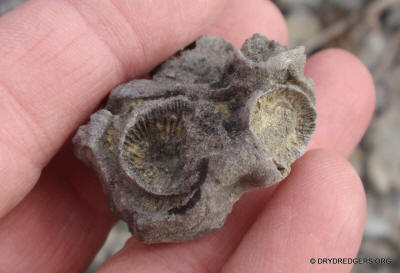
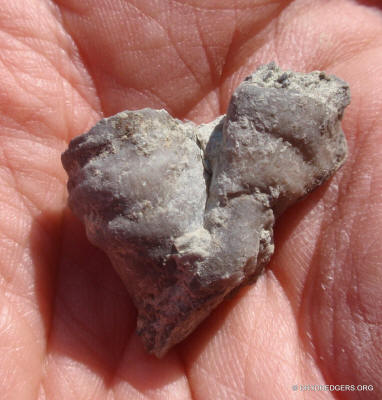
Colonial Coral
We found lots of cases where the colonial coral Protaraea richmondensis were encrusting other shells. In many cases, you could tell what animal it was encrusting.
In the specimen below, Protaraea richmondensis was
incrusting a gastropod completely. Can you see the shape of a snail? Hopefully
the snail was already dead when this happened to it.
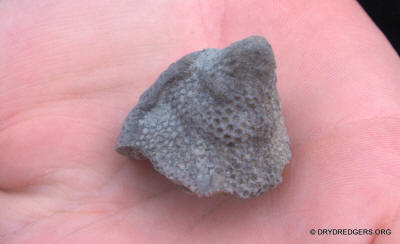
The coral Protaraea richmondensis often encrusted
brachiopods. Here's a Rafinesquina sp. encrusted on one side by this coral.
(next 2 pics)
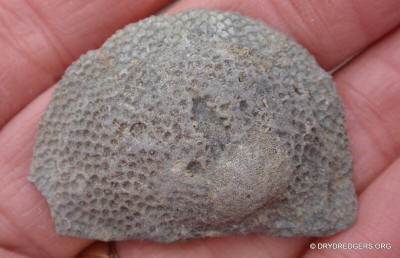
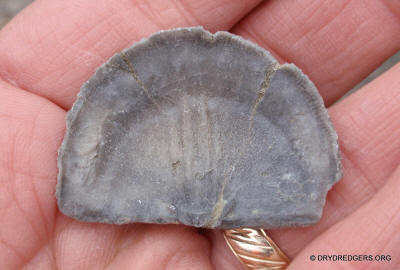
Here's a very interesting example where Protaraea richmondensis
encrusted an inarticulate brachiopod valve The brachiopod was
Trematis sp.. (two sides of specimen shown in next 2 photos).
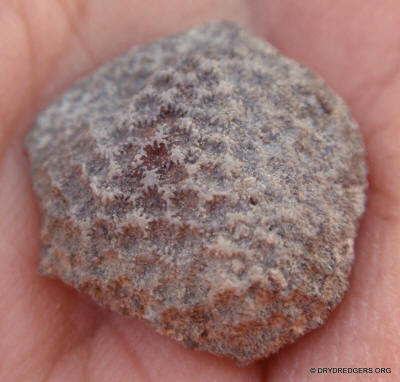
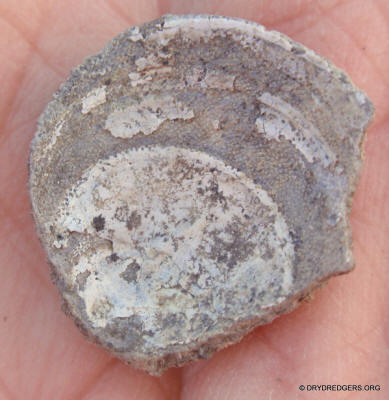
Trilobites
Here's one of the best finds. It's a pygidium of the less-common trilobite, Ceraurinus icarus.
Nautiloid Cephalopods
This site was great for the large numbers of nautiloid cephalopods we found. The
most interesting cephalopod was this rotund specimen that looks like the less common, very short-shelled variety,
Diestoceras sp.. This is a really nice find!

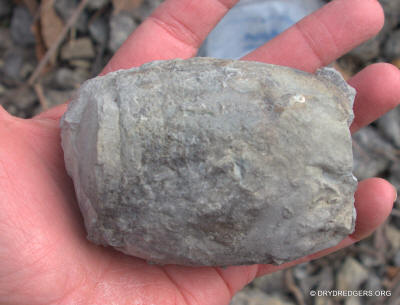
Most of the larger cephalopods we found were orthocone (straight shelled)
internal molds. The chambers of these shells are clearly visible.
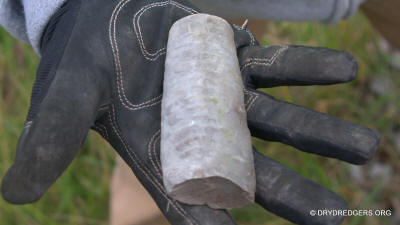
Often, just a couple of the chambers are found. They can still be
identified as cephalopods by the small circle that is the siphuncle, which is a
tube that runs down the length of the shell.
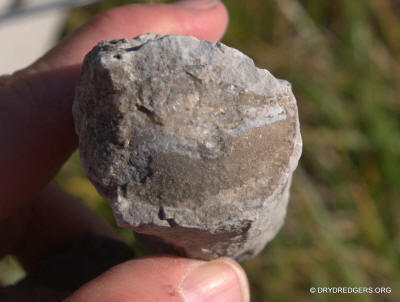
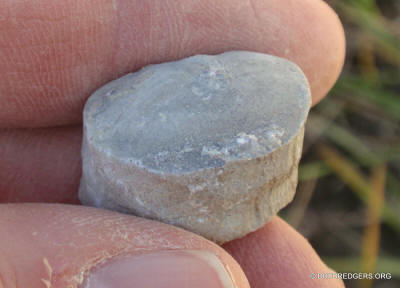
Here's a case where only a single chamber is preserved. You
can still see the siphuncle, but it's on the edge of the specimen. (next 3
pics)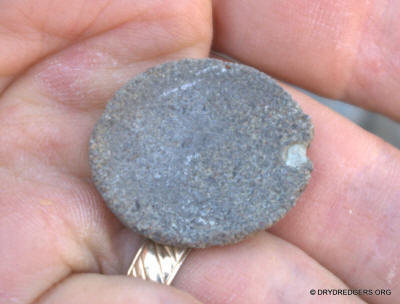

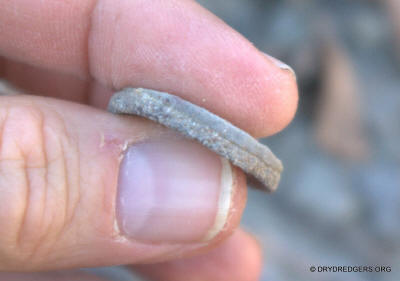
The siphuncle can also be seen clearly when you have a cross-section of the straight shelled nautiloid. (next 2 pics)
Brachiopods
The most common articulate brachiopod found that day was Vinlandostrophia sp..(formerly Platystrophia sp.) At first, we were finding pieces of them, often hard to identify on the rock surfaces (next photo).
Many of these brachiopods were free from the rock matrix, making them easier to
identify. These next two photos are Vinlandostrophia moritura.
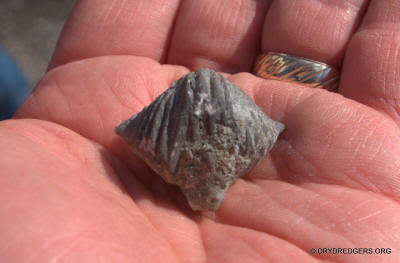
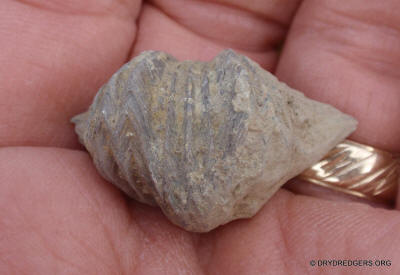
We also found another species of Vinlandostrophia named V. acutilirata. This species is thinner than V. moritura, and gets even thinner along the wings (extremities).
Another kind of brachiopod we found was
Hebertella sp. (next 2 pics)
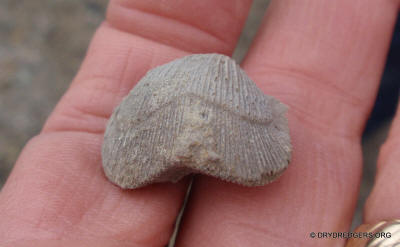
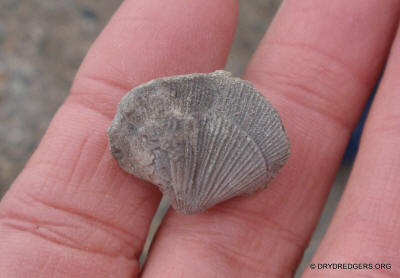
Normally, the Hebertella sp.
is found with a rectangular pedicle opening.
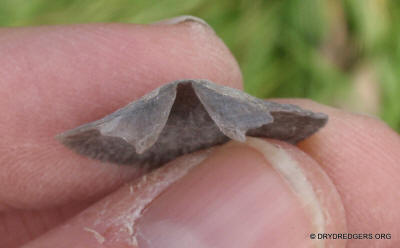
But occasionally, you find one there the two valves are smashed together and so
the pedicle opening is not visible.
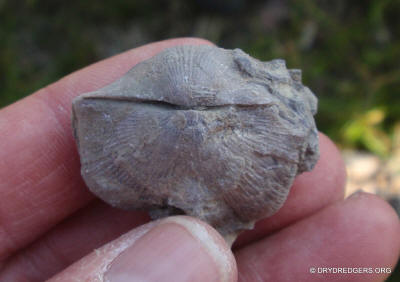
There were only a few Rafinesquina sp.
found.
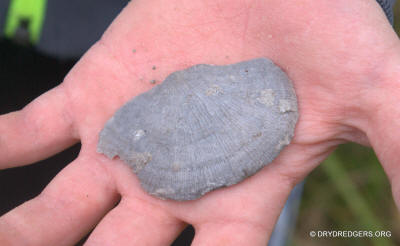
And we found a good number of the round brachiopod,
Lepidocyclus perlamellosum. 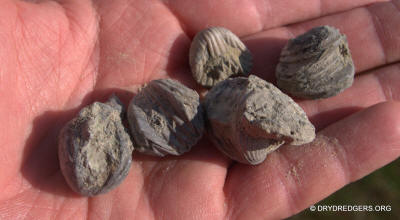
Pelecypods
As is true for most fossil sites near Cincinnati, Ohio, most of the bivalve fossils found were internal molds and not easy to identify.
Here is a nicely preserved internal mold of a clam. (next 3 pics show different
angles of the same fossil.)
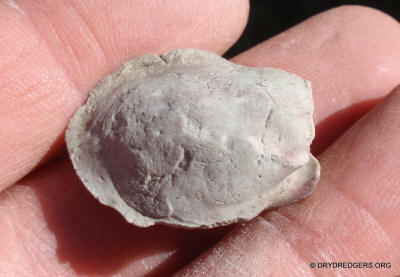
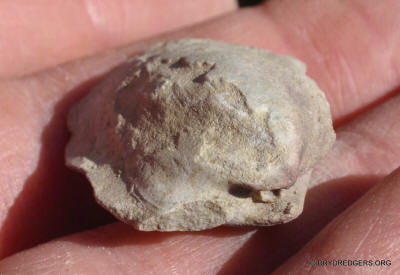
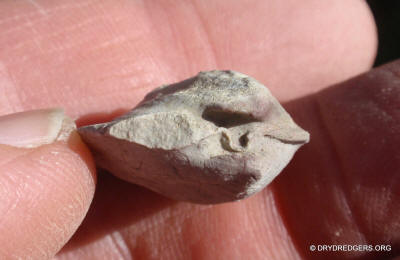

The clam fossil above has some shell features. It is probably
Ambonychia sp..
The impression on the rock below looks like it was probably from the clam
Caritodens sp..
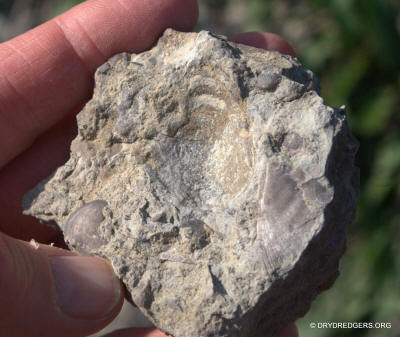
Gastropods
Snail fossils were abundant on this site. Here's a nice cross-section of a snail
exposed on a broken slab of rock.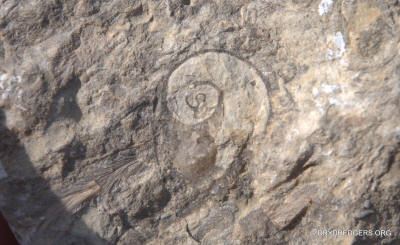 J
J
Just as with the clam fossils, most of the snail fossils were preserved as internal molds.
This site is known to have a fair number of bellerophontid monoplacophorans.
These are the internal molds of shells that spire inward rather than outward.
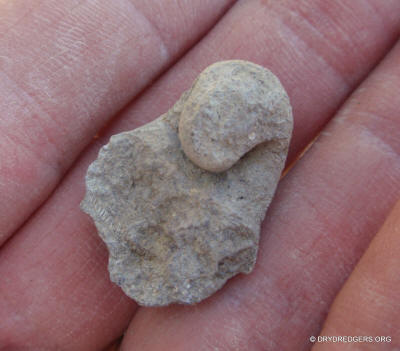
The next 3 pics are different angles of one such specimen.

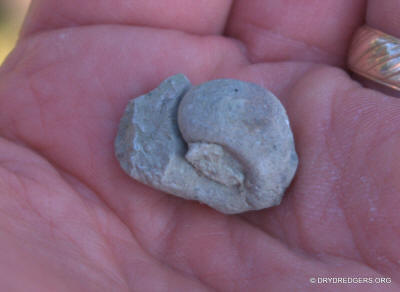
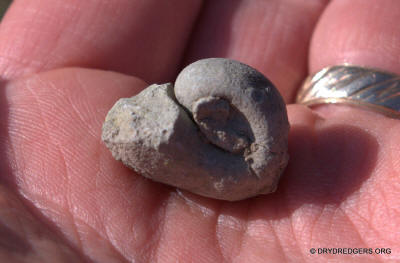
Here's a rock with two bellerophontids on it. (2 pics)
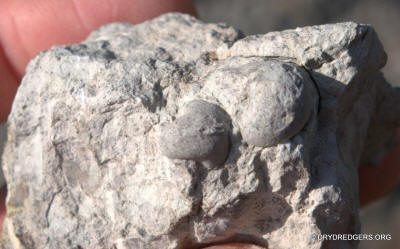
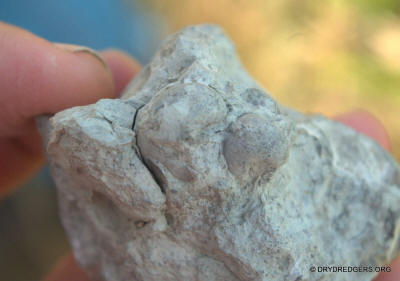
Bryozoans
Bryozoans were found encrusting all kinds of fossils. This first fossil looks
like an ordinary trepostomate bryozoan. Until you turn it over (second pic). It
has a very dark color and was encrusting a group of Streptelasma sp.
horn corals and possibly an entire hard ground.
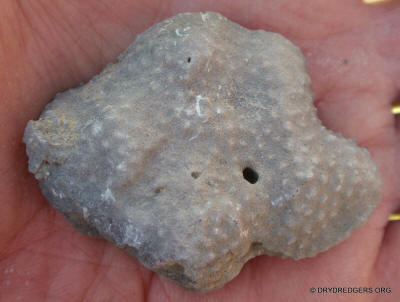
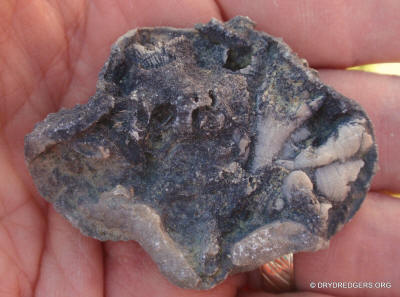
Here's a similar bryozoan. It was encrusting something, but I can't tell what.
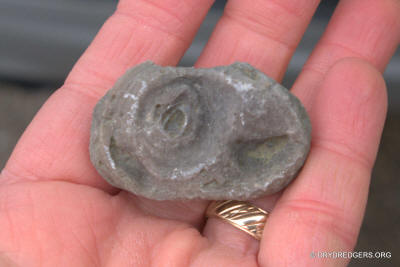
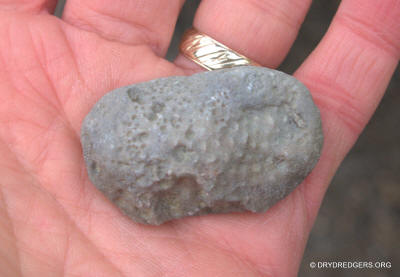
The below bryozoan was encrusting a brachiopod. (next 2 pics show both sides.)
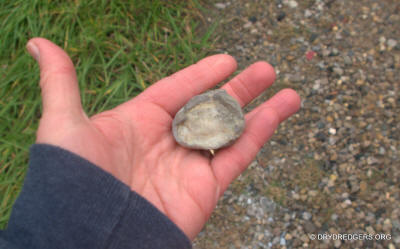

This broyzoan was encrusting a Grewingkia sp. horn
coral.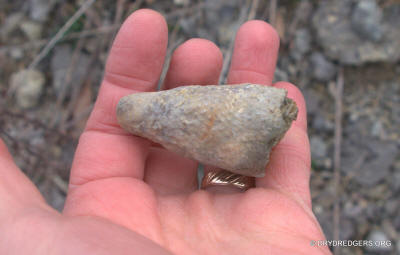
This next bryozoan was encrusting a clam. (2 pics showing both sides)
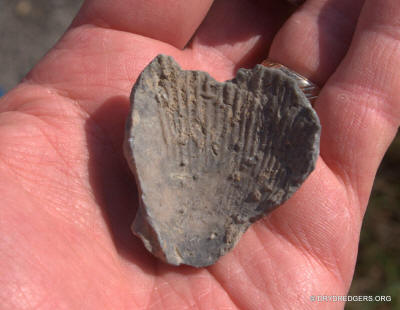
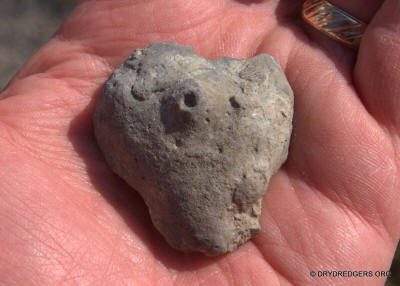
And here's a bryozoan encrusting a Rafinesquina sp.
brachiopod.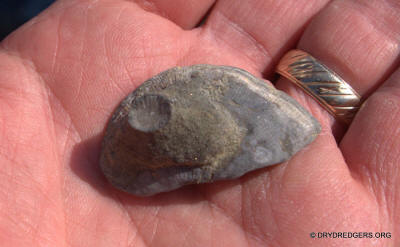
Now here's an interesting looking bryozoan. It is giving this gastropod internal
mold a punk hair style!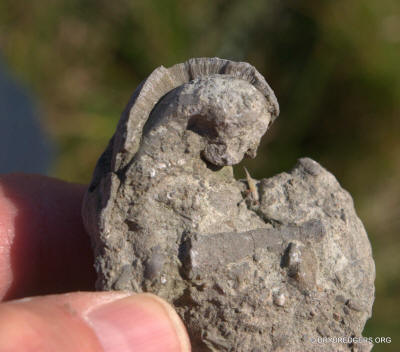
In the above photo, you can see the individual bryozoan chambers or zooecia
which help paleontologists diagnose the species of the bryozoan.
But some of the bryozoans were simply part of larger structures of bryozoans
rising above the ocean floor.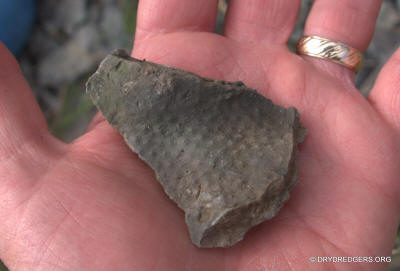
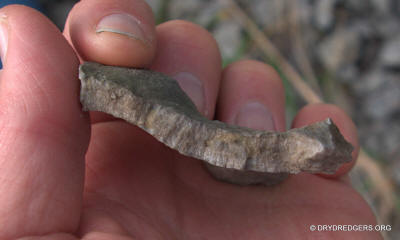
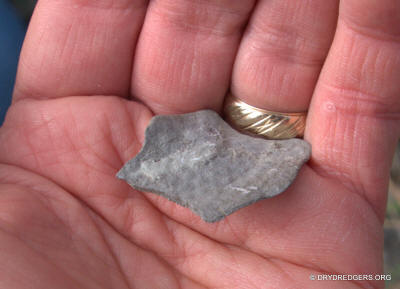
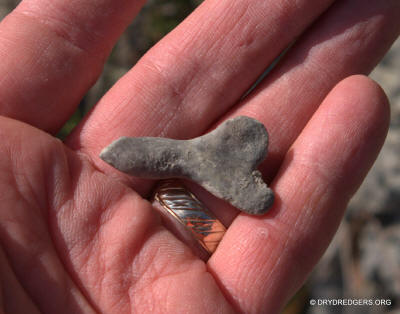
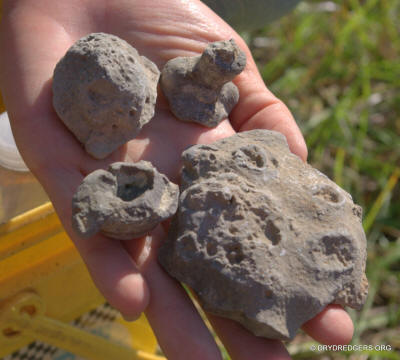
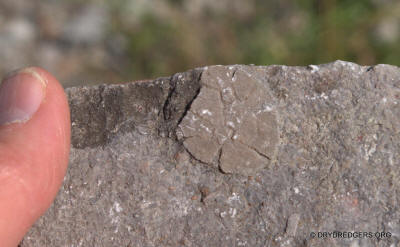
Now comes the fun. The weird stuff. The Dry Dredger who found the specimen below was drawn to it because it resembled the bryozoan Archimedes sp. we found on the previous month's field trip to the Mississippian Period fossils of Central Kentucky. In this case, this is mud from the late Ordovician Period that has turn into shale and wheathered an a way that has revealed some interesting stratiations.
Mystery Fossil
You know I love Ordovician mysteries. Here are five pictures of a specimen found
that day that slightly resembles a pine cone. It is made out of calcite and has
rectangular chambers all over it. I have not seen anything like it. This isn't a
trick. It is about 437 million years old. Take a
closer look and send me your ideas at
billheim@cinci.rr.com. I will disclose your suggestions at the end of this
report.
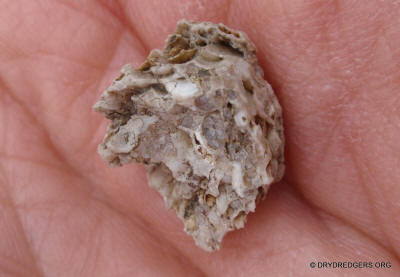
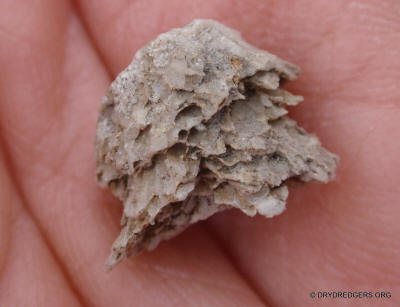
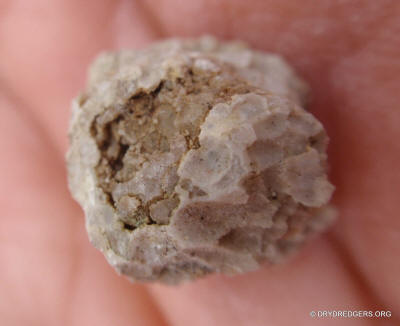
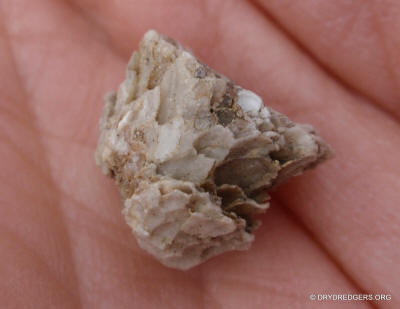
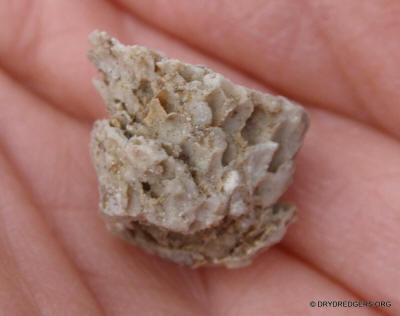
Identity of the above mystery fossil (submitted ideas).
Ron Fine, who found the famous monster fossil code-named "Godzillus" suggests that the above fossil "is the central region of a mature Grewingkia sp. horn coral. This area.... is not composed of septa. In large, mature Grewingkia, this area has a complex, lenticular appearance. I think your mystery fossil is that area eroded out of a horn coral."
I agree with Ron. The site is so loaded with horn coral and has been weathering for so many decades that much of the unidentified debris is likely to be eroded horn coral. What do you think? (Please, no petrified pine cones ideas.)
That's all for this field trip.
You can see pictures of our previous recent field trips to Horn Coral Heaven.
Now let's see some photos of the Dry Dredgers at Fossil Fest 2014.
Back to the Field Trip Index Page
Return to Dry Dredgers Home Page
The Dry Dredgers and individual contributors reserve the
rights to all information, images, and content presented here. Permission to
reproduce in any fashion, must be requested in writing to admin@drydredgers.org.
www.drydredgers.org is designed and maintained by Bill Heimbrock.